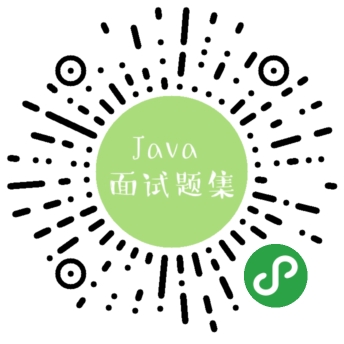- JDK Atomic开头的类,是通过 CAS 原理解决并发情况下原子性问题。
- CAS 包含 3 个参数,CAS(V, E, N)。V 表示需要更新的变量,E 表示变量当前期望值,N 表示更新为的值。只有当变量 V 的值等于 E 时,变量 V 的值才会被更新为 N。如果变量 V 的值不等于 E ,说明变量 V 的值已经被更新过,当前线程什么也不做,返回更新失败。
- 当多个线程同时使用 CAS 更新一个变量时,只有一个线程可以更新成功,其他都失败。失败的线程不会被挂起,可以继续重试 CAS,也可以放弃操作。
- CAS 操作的原子性是通过 CPU 单条指令完成而保障的。JDK 中是通过 Unsafe 类中的 API 完成的。
- 在并发量很高的情况,会有大量 CAS 更新失败,所以需要慎用。
未使用原子类,测试代码
package constxiong.interview; /** * JDK 原子类测试 * @author ConstXiong * @date 2019-06-11 11:22:01 */ public class TestAtomic { private int count = 0; public int getAndIncrement() { return count++; } // private AtomicInteger count = new AtomicInteger(0); // // public int getAndIncrement() { // return count.getAndIncrement(); // } public static void main(String[] args) { final TestAtomic test = new TestAtomic(); for (int i = 0; i <3; i++) { new Thread(){ @Override public void run() { for (int j = 0; j <10; j++) { try { Thread.sleep(100); } catch (InterruptedException e) { e.printStackTrace(); } System.out.println(Thread.currentThread().getName() + " 获取递增值:" + test.getAndIncrement()); } } }.start(); } } }
打印结果中,包含重复值
Thread-0 获取递增值:1
Thread-2 获取递增值:2
Thread-1 获取递增值:0
Thread-0 获取递增值:3
Thread-2 获取递增值:3
Thread-1 获取递增值:3
Thread-2 获取递增值:4
Thread-0 获取递增值:5
Thread-1 获取递增值:5
Thread-1 获取递增值:6
Thread-2 获取递增值:8
Thread-0 获取递增值:7
Thread-1 获取递增值:9
Thread-0 获取递增值:10
Thread-2 获取递增值:10
Thread-0 获取递增值:11
Thread-2 获取递增值:13
Thread-1 获取递增值:12
Thread-1 获取递增值:14
Thread-0 获取递增值:14
Thread-2 获取递增值:14
Thread-1 获取递增值:15
Thread-2 获取递增值:15
Thread-0 获取递增值:16
Thread-1 获取递增值:17
Thread-0 获取递增值:19
Thread-2 获取递增值:18
Thread-0 获取递增值:20
Thread-1 获取递增值:21
Thread-2 获取递增值:22测试代码修改为原子类
package constxiong.interview; import java.util.concurrent.atomic.AtomicInteger; /** * JDK 原子类测试 * @author ConstXiong * @date 2019-06-11 11:22:01 */ public class TestAtomic { // private int count = 0; // // public int getAndIncrement() { // return count++; // } private AtomicInteger count = new AtomicInteger(0); public int getAndIncrement() { return count.getAndIncrement(); } public static void main(String[] args) { final TestAtomic test = new TestAtomic(); for (int i = 0; i <3; i++) { new Thread(){ @Override public void run() { for (int j = 0; j <10; j++) { try { Thread.sleep(100); } catch (InterruptedException e) { e.printStackTrace(); } System.out.println(Thread.currentThread().getName() + " 获取递增值:" + test.getAndIncrement()); } } }.start(); } } }
打印结果中,不包含重复值
Thread-0 获取递增值:1
Thread-2 获取递增值:2
Thread-1 获取递增值:0
Thread-0 获取递增值:3
Thread-1 获取递增值:4
Thread-2 获取递增值:5
Thread-0 获取递增值:6
Thread-1 获取递增值:7
Thread-2 获取递增值:8
Thread-0 获取递增值:9
Thread-2 获取递增值:10
Thread-1 获取递增值:11
Thread-0 获取递增值:12
Thread-1 获取递增值:13
Thread-2 获取递增值:14
Thread-0 获取递增值:15
Thread-1 获取递增值:16
Thread-2 获取递增值:17
Thread-0 获取递增值:18
Thread-1 获取递增值:19
Thread-2 获取递增值:20
Thread-0 获取递增值:21
Thread-2 获取递增值:23
Thread-1 获取递增值:22
Thread-0 获取递增值:24
Thread-1 获取递增值:25
Thread-2 获取递增值:26
Thread-0 获取递增值:27
Thread-2 获取递增值:28
Thread-1 获取递增值:29- Java 自学指南
- Java 面试题汇总PC端浏览【点这里】
- Java知识图谱
- Java 面试题汇总小程序浏览,扫二维码

所有资源资源汇总于公众号
